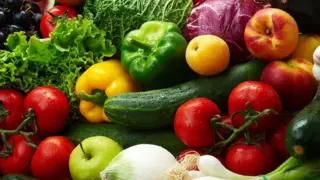Georgia exported agricultural products to 107 countries in 2024 according to GeoStat data. The export value totalled USD 1,680 million, reflecting a 17% rise as compared to the previous year’s figure of USD 1,437 million.
Graph 1: External Trade (USD Million)
Source: National Statistics Office of Georgia
Georgia’s main agricultural exports included spirituous beverages (17% of total exports), wine (16%), mineral and fresh waters (10%), non-alcoholic carbonated drinks (8%), nuts – primarily hazelnuts – (6%) and processed fruits – mainly walnuts – (3%), amongst others, during the reporting year.
Agri-food products were primarily exported to the following markets in 2024: Russia (USD 624 million, 37%), the European Union (USD 180 million, 11%), Azerbaijan (USD 174 million, 10%), Armenia (USD 160 million, 9.5%), Kazakhstan (USD 71 million, 4.2%) and Kyrgyzstan (USD 61 million, 3.6%).
As mentioned above, agricultural products worth USD 180 million were exported to the EU countries in 2024 which marked a 11% rise (USD 17.3 million) as compared to last year. The EU accounted for 11% of Georgia’s total agri-food exports, mainly purchasing nuts (primary and processed), accounting for 46% of Georgia’s exports to the EU, wine – 19%, alcoholic beverages – 11%, mineral and fresh waters – 8%.
The following countries accounted for the largest shares of Georgia’s exports to the EU: Germany – 21%, Poland – 14%, France – 14%, Italy – 11%, Lithuania – 9%, Spain – 9%, Latvia – 5%, the Netherlands – 5% and the Czech Republic – 3%.
Agri-food imports totalled USD 2,196 million in 2024, representing a 9% increase as compared to the previous year’s figure (USD 2,018 million).
The main imported products in 2024 were: cigarettes, accounting for 9% of total imports, poultry meat and edible by-products – 5%, chocolate products – 5%, flour confectionery – 4%, sugar – 4%, food additives – 4%, wheat – 3%, alcoholic beverages – 3%, pork – 2%, other products – 63%.
Furthermore, agri-food imports were primarily sourced from the following countries: the European Union (28%), Russia (22%), Turkey (13%), Ukraine (6%), Brazil (5%), Azerbaijan (3%), China (3%) and others.
Imports from the European Union totalled USD 627 million, marking a 20% rise as compared to the previous year’s figure of USD 106 million. The leading import markets amongst the EU countries were Germany – 13% of total EU-sourced imports, France – 12%, Poland – 12%, the Netherlands – 11%, Italy – 10%, Lithuania – 9% and others.
The largest share of agricultural imports from the European Union is attributed to cigarettes (9%), followed by sugar (7%), food additives (7%), chocolate products (6%), animal feed (5%), alcoholic beverages (4%), flour confectionery (4%), poultry meat (4%), dairy products – including cheese, cottage cheese, butter and other milk fats – (3%) and plant seedlings (3%). The remaining 41% comprises various other products.
When discussing the export and import of agricultural products, it is important to consider the trade balance (the difference between exports and imports). Notably, trade balance has consistently been negative over the years (meaning imports exceed exports).
There was a slight improvement in the trade balance in 2013-2024, followed by increases in the trade deficit in 2015 and 2017. The negative balance gradually decreased again from 2018 to 2021. The trade deficit constituted USD 590 million in 2022, marking a 185% rise as compared to 2021, when the figure amounted to USD 580 million. The deficit remained nearly unchanged at USD 580 million in 2023 (suggesting a slight 1.7% decrease). The negative trade balance totalled USD 516 million in 2024 which represents a 11% reduction as compared to the previous year.
Graph 2: Trade Balance of Agri-Food Products (USD Million)
Source: National Statistics Office of Georgia
In summary, Georgia can be characterised as a consumption-oriented country as it imports more agricultural products than it exports. This leads to more dollars leaving the country than entering. Net outflow of foreign currency may contribute to depreciation of the national currency over the long term which in turn poses a risk to macroeconomic stability.







